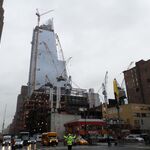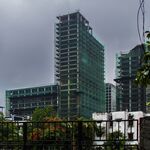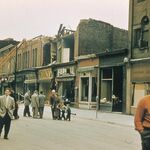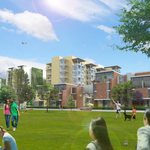Walking along Toronto's Bloor-Danforth today, one cannot help but notice the subtle yet marked shifts in the local landscape that come and go with each and every neighbourhood that is passed. From High Park to Bloordale, Koreatown to the Annex, and Yorkville to Greektown, Bloor-Danforth exists as a quintessentially "Toronto" main street. With its endless kilometres of anonymous low-rise retail punctuated by small bursts of highrises and big-city boutiques, the commercial thoroughfare is little different at first glance from any other such Toronto main street, whether it be King, Queen, or Yonge. The reason for this is simple: Bloor-Danforth, like virtually all of Toronto's major downtown arteries, was once home to a bustling streetcar route, and the busy commercial thoroughfare owes its place in the city today to the streetcar line that graced the street from 1890 to 1968. This edition of Once Upon a Tram will take an in-depth look at the fascinating history of the Bloor-Danforth Streetcar.
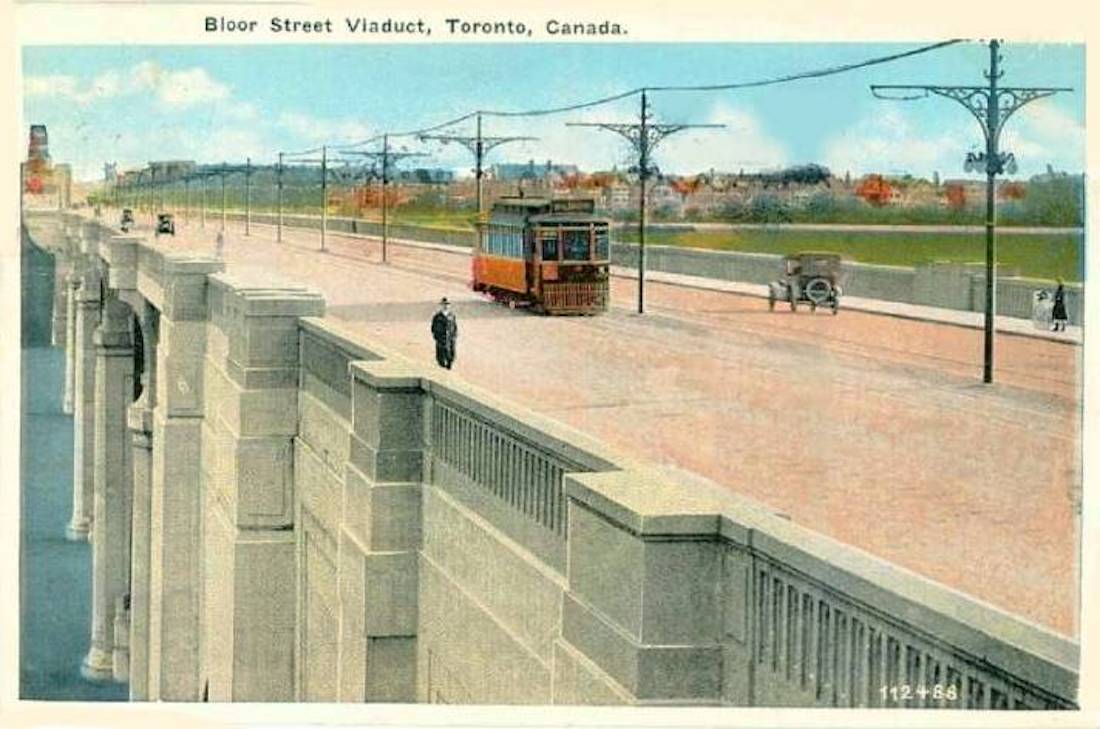 Bloor Street Viaduct, streetcar in service, c. 1920s, public domain archival image
Bloor Street Viaduct, streetcar in service, c. 1920s, public domain archival image
Begun in 1890, what would eventually be known collectively as the Bloor-Danforth Streetcar Line was once an amalgamation of four separate lines along various stretches of Bloor Street and Danforth Avenue, beginning with the first line from Sherbourne to Clinton, which was originally built by the Toronto Street Railway Company. Operated during its early years using a fleet of horse-cars running on a 20-minute headway, the line went electric in 1893 shortly after its 1891 incorporation under the city-owned Toronto Railway Company, a move that allowed for its rapid extension thereafter.
 Corner of Bloor and Dovercourt Road, c. 1910, public domain archival image
Corner of Bloor and Dovercourt Road, c. 1910, public domain archival image
Soon after its westward extension to Dufferin, the Bloor Streetcar was incorporated into the new Belt Line route, which ran in both directions along Bloor, Sherbourne, King, and Spadina forming a continuous downtown loop that ran 24/7 rain or shine. By 1909, the Bloor Route had regained its former name,and the route was split between east-west runs from Landsdowne to Church, and the downtown-bound Belt Line runs. All the while, the line continued to expand service west, reaching as far as Dundas West by 1910, while on the eastern side of the Don Valley, service along the Danforth was pushing east from Broadview towards Woodbine.
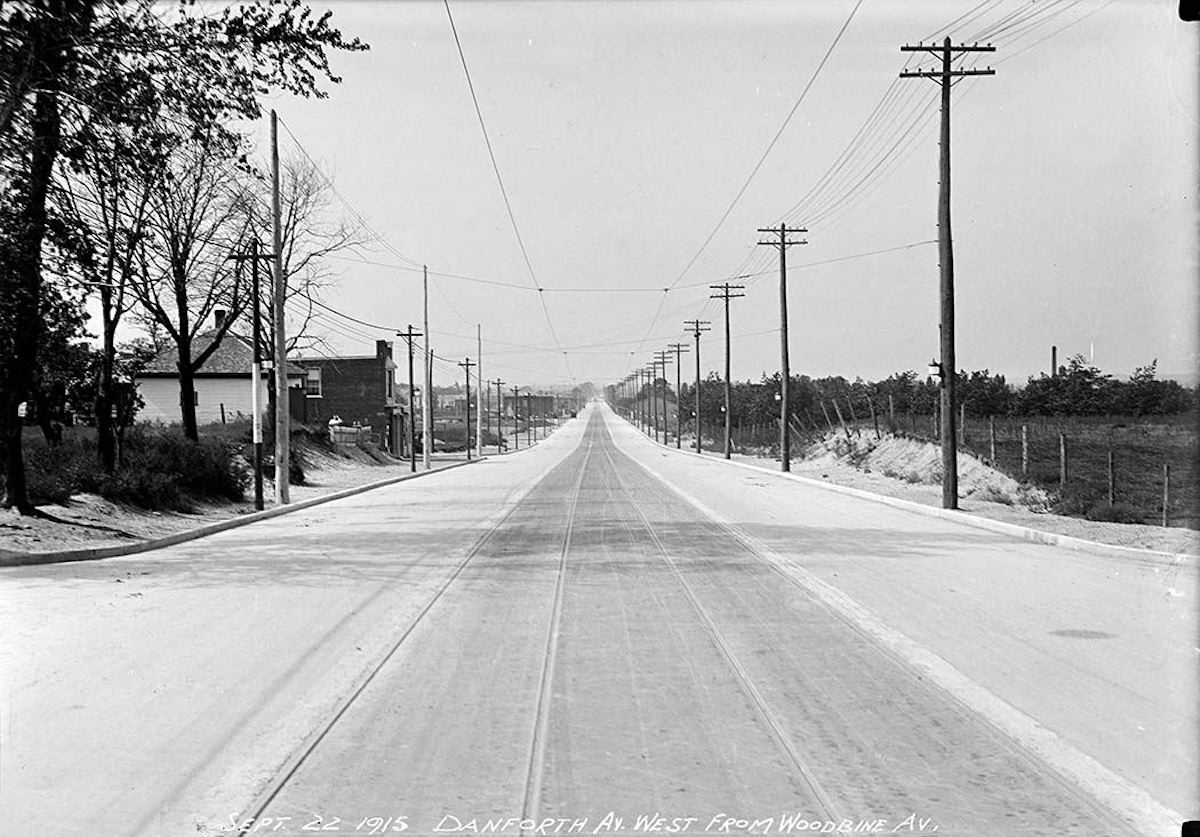 Danforth Ave, looking west from Woodbine, 1915, image via the City of Toronto Archives
Danforth Ave, looking west from Woodbine, 1915, image via the City of Toronto Archives
The Toronto Railway Company continued to expand the still-separate Bloor and Danforth Streetcar Lines, with tracks reaching as far west as High Park and beyond by the mid-1910s, and the newly expanded Danforth line became connected to an increasing number of north-south lines beginning with Broadview. However, there remained the issue of how best to connect the two sides, as the Don Valley had proved an insurmountable obstacle to the city's ambitious transit plans.
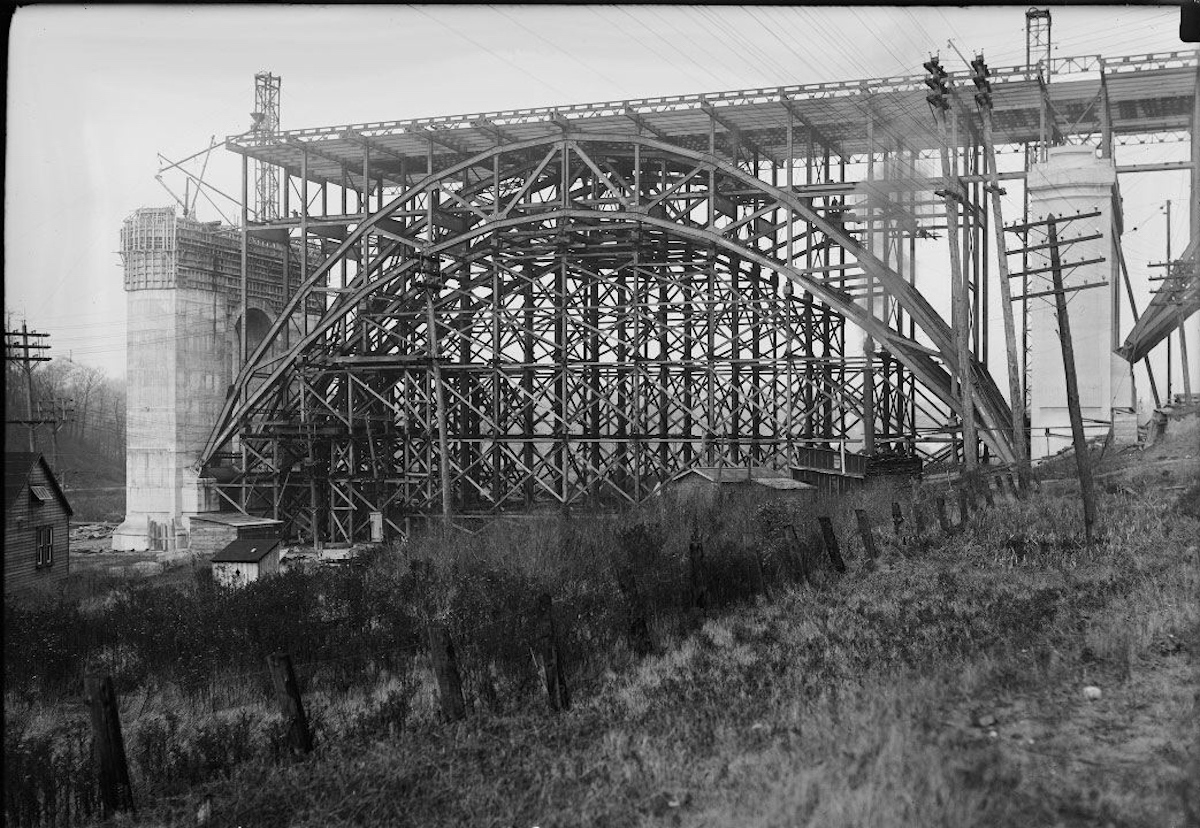 Prince Edward Viaduct under construction in 1916, image via the City of Toronto Archives
Prince Edward Viaduct under construction in 1916, image via the City of Toronto Archives
Hinted at in the first image, and likely obvious to anyone who has ever had the experience of riding the Bloor-Danforth Subway across the Don Valley via the lower level rail deck of the Prince Edward Viaduct between Sherbourne and Broadview Stations, the brainchild of noted Canadian architect Edmund Burke and longtime Commissioner of Public Works R. C. Harris was constructed with mass transit in mind. The future-proof addition of the costly lower rail deck, along with the inclusion of the upper deck's capacity for electrified light rail, gifted the city with one of its greatest pieces of transit infrastructure.
 Prince Edward Viaduct nearing completion, July 1917, image via the City of Toronto Archives
Prince Edward Viaduct nearing completion, July 1917, image via the City of Toronto Archives
Completed in 1918, the Prince Edward, or "Bloor" Viaduct was a marvel of modern engineering, allowing for smooth passage over the Don for streetcar passengers. The bridge served to connect what was then considered mid-town Toronto along the bulk of its eastern and western expanses.
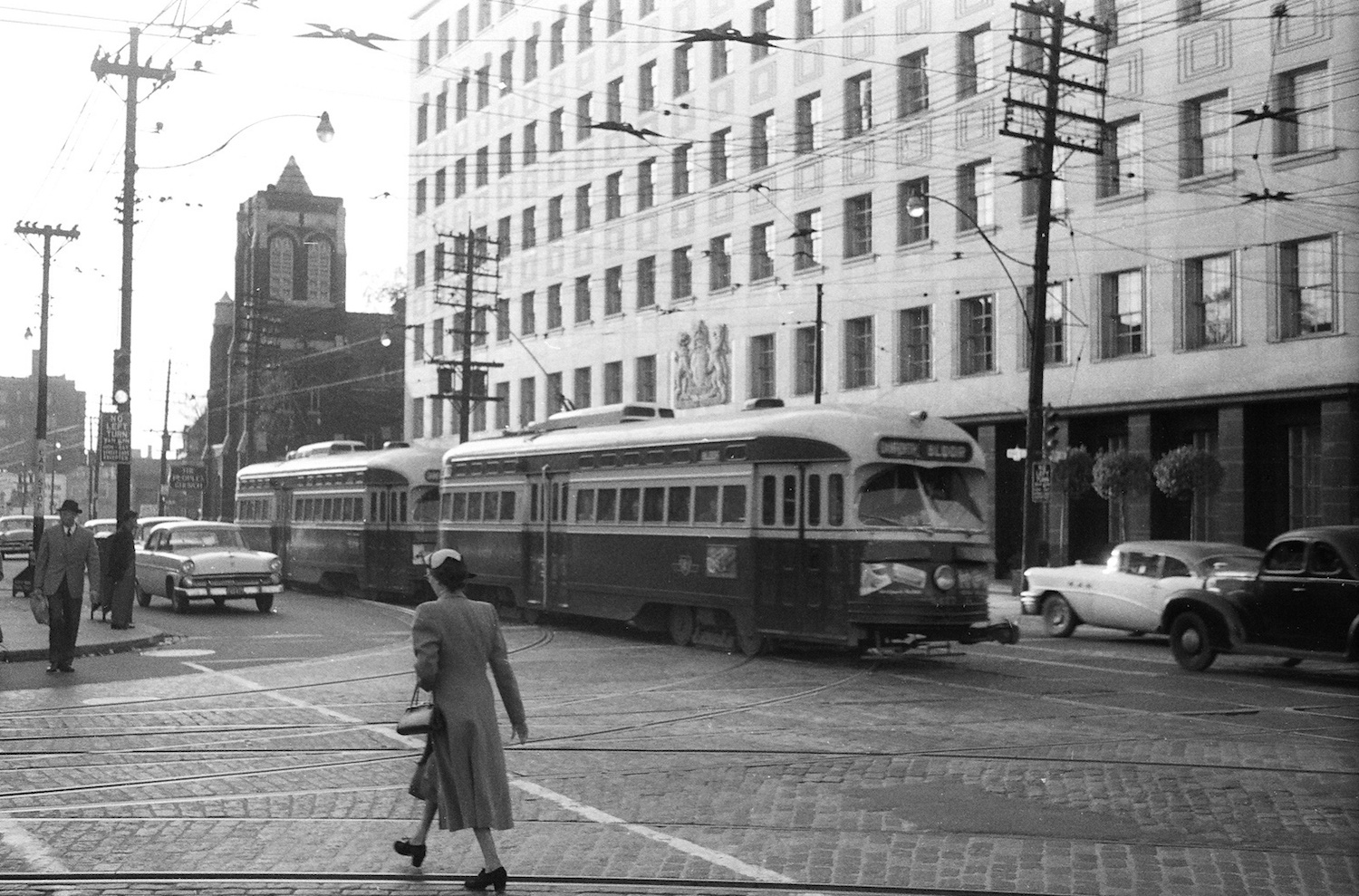 Bloor-Danforth Streetcar moving east across Church Street, 1955, unknown photographer via Transit Toronto
Bloor-Danforth Streetcar moving east across Church Street, 1955, unknown photographer via Transit Toronto
Following the TTC takeover of Toronto's patchwork transit system in 1921, progress continued at an even quicker pace. The city was keen to ensure the success of Toronto's streetcar network, on the back of which the city's continued development and outward expansion directly depended. From the 1950s onwards, and especially following the 1954 debut of the Yonge Street Subway, the Bloor-Danforth Streetcar route soon became the city's most innovative. The last decade of its existence witnessed the construction of a series of subterranean passenger terminals, first at its intersection with the Yonge Subway, then with the University-Spadina Line, and then towards the end of its life at the western and eastern terminus' of the newly opened Bloor-Danforth Subway during the late 1960s.
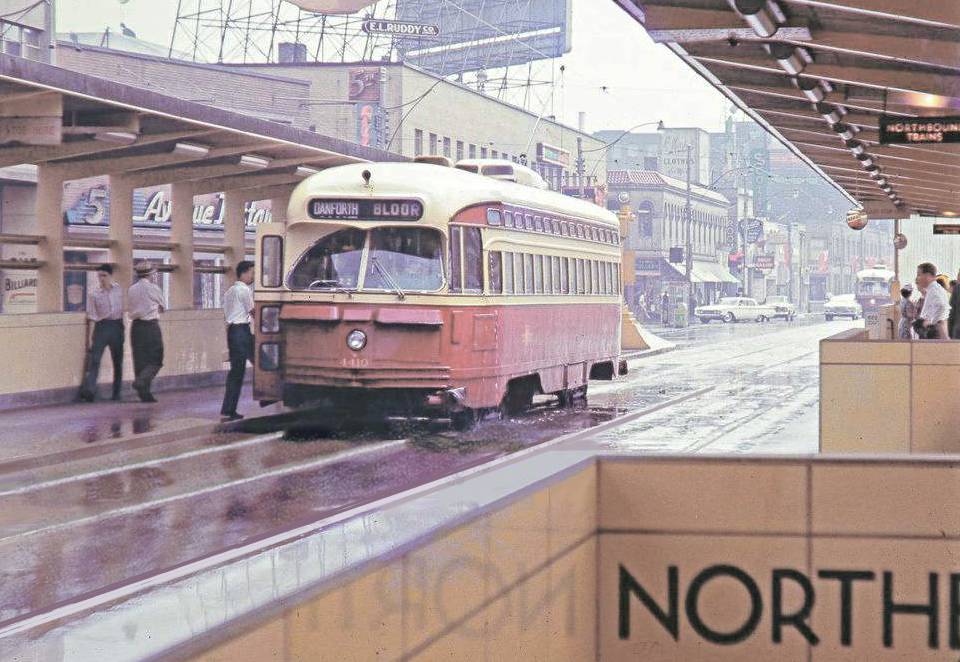 Streetcars at Bloor and Yonge, transferways to Yonge Subway visible, 1960, image via chuckmantorontonostalgia.com
Streetcars at Bloor and Yonge, transferways to Yonge Subway visible, 1960, image via chuckmantorontonostalgia.com
Anticipating the streetcar-subway connections featured on today's St. Clair ROW, the transferways built to accommodate the successive additions of the Yonge (1954) and University-Spadina (1963) Subway provided the Bloor-Danforth Streetcar with a considerable amount of modernity, paving the way for the completion of the Bloor-Danforth Subway in 1966. A stop-gap measure to be sure, the transferways worked to facilitate passage from the old system to the new. Passengers quickly found the Yonge-Bloor interchange to be a busy hectic experience befitting the Toronto that sprung forth from the postwar era to today.
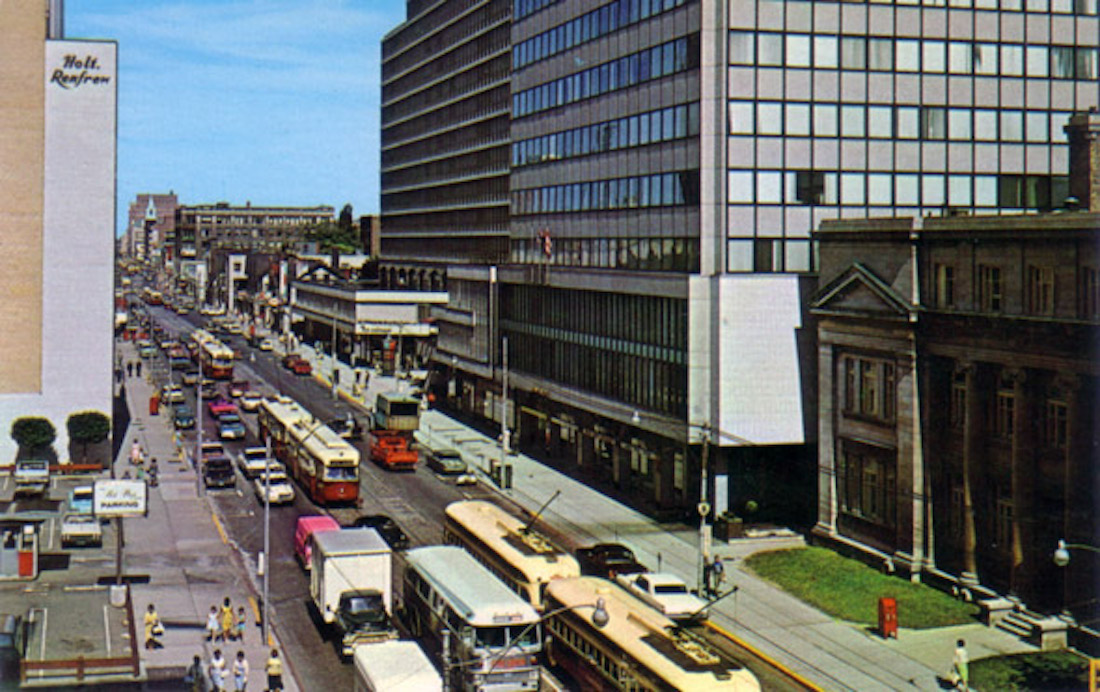 Streetcars travelling through a bustling Yorkville, c. 1960s, public domain archival image
Streetcars travelling through a bustling Yorkville, c. 1960s, public domain archival image
In the meantime, the debut of the original Bloor-Danforth Subway in 1966, which operated in its first phase from 1966-68 from Keele to Woodbine, spelled the end for the Bloor-Danforth Streetcar, which was phased out entirely following the subway's quick western and eastern expansion to Islington and Warden that was completed in 1968. Once again, transferways were built to ease passage from streetcar to subway, and the two terminus' were served by purpose-built passenger tunnels which allowed travellers to connect directly to the subway when approaching from either end of the line. Separated once again, the Bloor-Danforth Streetcar operated in this truncated form for only two years before ultimately meeting its final demise on May 11, 1968, following the opening of the newly extended Bloor-Danforth Subway.
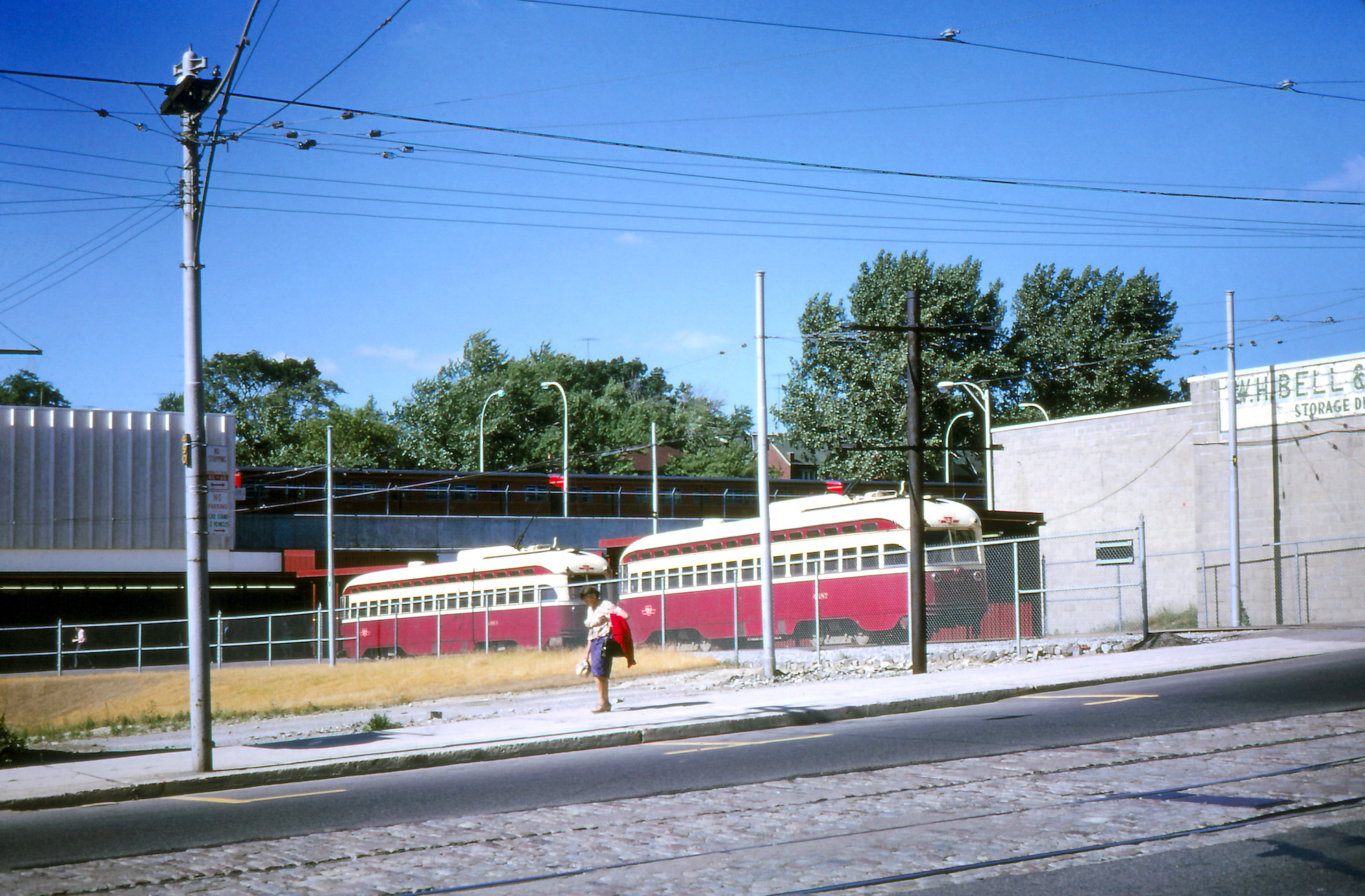 Streetcars and Subway train intermingling at Keele Station, 1966, image via the Howard Wayt Collection via Transit Toronto
Streetcars and Subway train intermingling at Keele Station, 1966, image via the Howard Wayt Collection via Transit Toronto
Viewed above, the temporary Keele Station Streetcar Loop allowed for easy passage from streetcar to subway. The experience was made all the easier thanks to the installation of a pedestrian tunnel complete with moving sidewalk that connected directly to the subway platform.
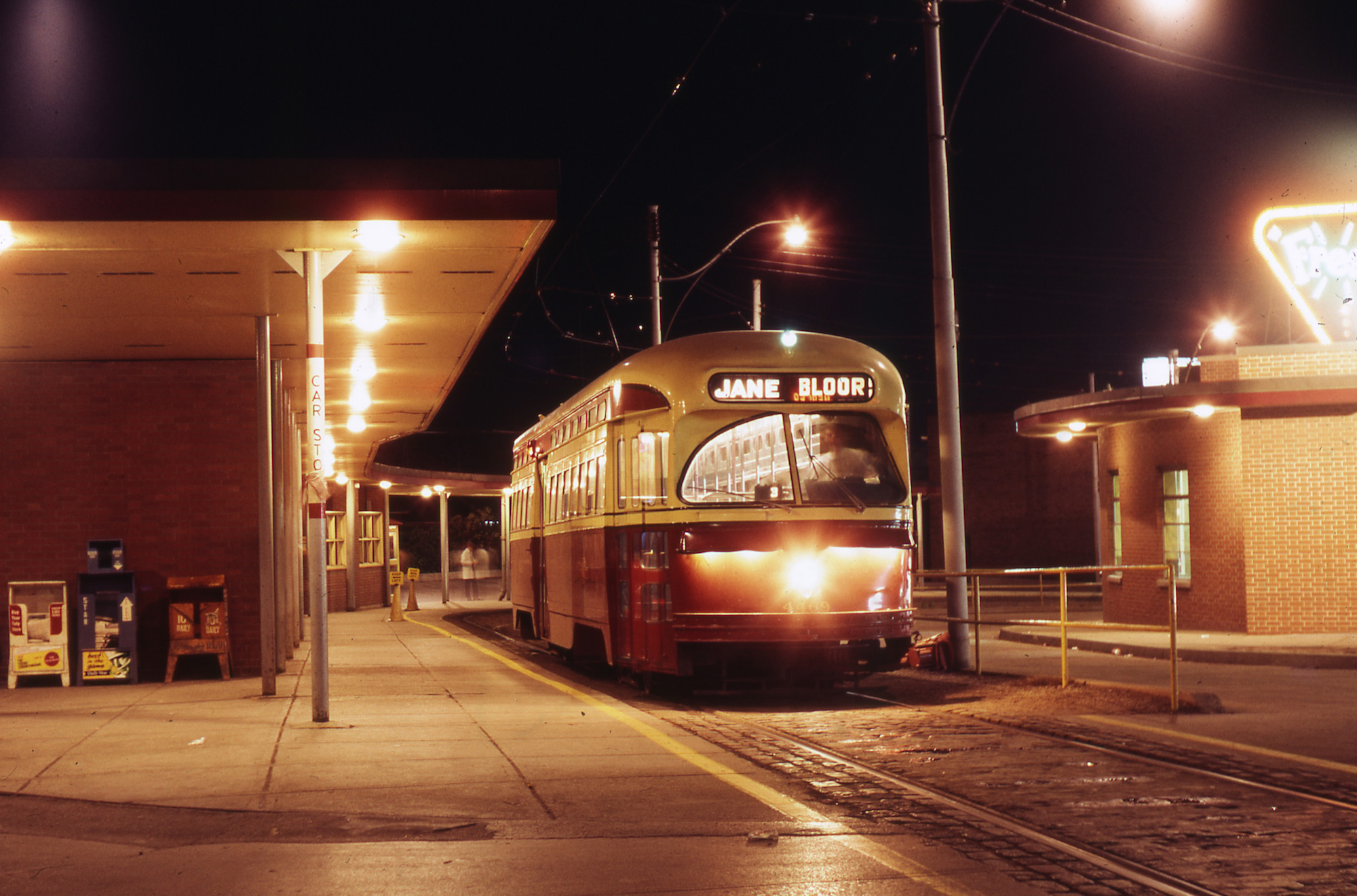 Last call, PCC sits at Jane Loop on the eve of the line's closure, Feb. 24, 1966, image via the John Knight Collection via TTO
Last call, PCC sits at Jane Loop on the eve of the line's closure, Feb. 24, 1966, image via the John Knight Collection via TTO
Paved over and in many places torn up completely, the trackbed of the former Bloor-Danforth Streetcar has all but disappeared from view. The line's few remaining remnants, exposed whenever construction crews uncover a piece of rail, are all that now exists to remind us of the precursor to today's Bloor-Danforth Subway. A vital piece of Toronto's lost transit history, second only to the similarly fated Yonge Streetcar, the tale of the Bloor-Danforth Streetcar is one which is intertwined with the history of the city itself.
SkyriseCities will return soon with a new edition of Once Upon a Tram, which will take an in-depth look at the transit legacy of a city near you. In the meantime, feel free to join the conversation in the comments section below. Got an idea for this series? Let us know!

 11K
11K 
















